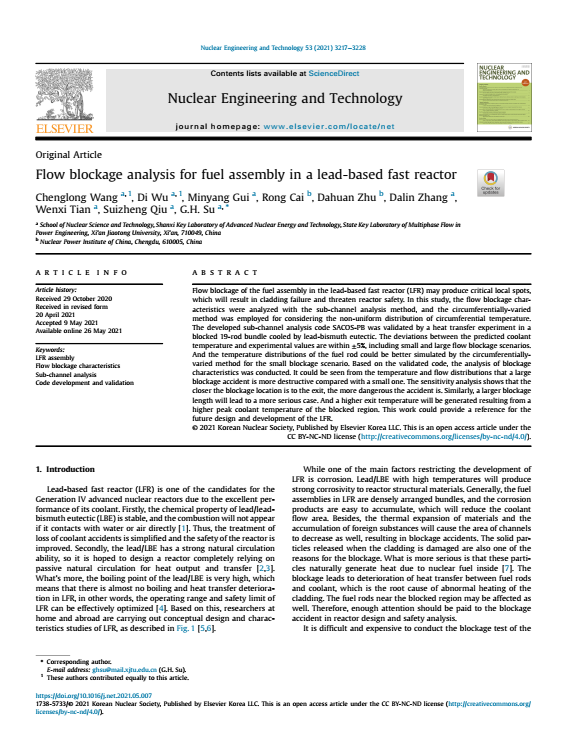Flow blockage of the fuel assembly in the lead-based fast reactor (LFR) may produce critical local spots, which will result in cladding failure and threaten reactor safety. In this study, the flow blockage characteristics were analyzed with the sub-channel analysis method, and the circumferentially-varied method was employed for considering the non-uniform distribution of circumferential temperature. The developed sub-channel analysis code SACOS-PB was validated by a heat transfer experiment in a blocked 19-rod bundle cooled by lead-bismuth eutectic. The deviations between the predicted coolant temperature and experimental values are within +/- 5%, including small and large flow blockage scenarios. And the temperature distributions of the fuel rod could be better simulated by the circumferentially varied method for the small blockage scenario. Based on the validated code, the analysis of blockage characteristics was conducted. It could be seen from the temperature and flow distributions that a large blockage accident is more destructive compared with a small one. The sensitivity analysis shows that the closer the blockage location is to the exit, the more dangerous the accident is. Similarly, a larger blockage length will lead to a more serious case. And a higher exit temperature will be generated resulting from a higher peak coolant temperature of the blocked region. This work could provide a reference for the future design and development of the LFR.
